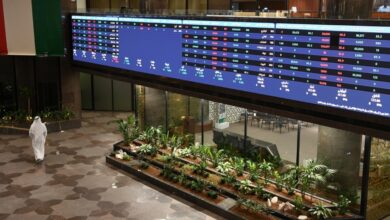
Bharatiya Janata Party returned to power in the country’s capital Delhi after 27 years, trouncing Chief Minister Arvind Kejriwal and his Aam Aadmi Party (AAP) in a major setback for the anti-BJP opposition.
Twelve years since their sensational ride to power in the 2013 assembly elections on the back of a popular anticorruption movement, it was clear Kejriwal and Manish Sisodia, his deputy, had lost their constituencies well before vote counting had finished on Saturday.
The AAP temporarily locked down its party headquarters in central Delhi on Saturday afternoon as celebrations broke out at the nearby BJP offices, adorned in the party colour of saffron, with party workers dancing and distributing sweets. “Development wins, good governance triumphs,” Modi wrote on X.
In the 70-seat assembly in Delhi, the BJP had won 48 seats. The AAP tally went from the 63 seats it won in the 2020 election to 22 seats.
“What once started as a people’s movement had now fizzled into a mere political party,” said Neelanjan Sircar, a senior fellow at the Delhi-based Centre for Policy Research (CPR), referring to the AAP. “Kejriwal is perhaps just a politician now and once that shine wears off, the core voters’ affiliation is weakened.”
Delhi, where more than 33 million people live and the national capital city, New Delhi, is located, is the centre of political power in India – and one that for more than a quarter of a century has remained out of the grip of the BJP despite its meteoric political rise under Modi since 2014.
“Delhi is a mini India, it has a substantial population from various regions of the country – and the BJP has shown that if they can win Delhi, they can win anything,” Rasheed Kidwai, a political analyst, told Al Jazeera. “This turnaround is significant because this victory is a story of BJP’s micromanagement in constituencies. And tells us that they are unmatched.”
Delhi’s electorate is also among the most unequal, with regard to caste and class differences, said Sircar. “Unless you’re able to get at least some bits and pieces of all the population, it’s going to be hard to win the election,” he said. A section of so-called “upper-caste” voters, which form nearly 40 percent of Delhi’s population, he added, had flocked across to the BJP, attracted by promises of subsidies and development as well as a desire for change following more than a decade of AAP rule.
In the run-up to the election, in which nearly 9.5 million people voted on Wednesday, the BJP did not confirm its pick for chief minister for Delhi, which Kidwai said, worked in the party’s favour. “There was no disillusionment [about any one candidate] among the different castes or voters from other regions and the suspense kept the stage even for them and rolled to their advantage.”
The Congress party, India’s oldest party, which leads the national opposition, INDIA alliance, has remained on the periphery in the assembly for some time and, for the third election in a row, failed to win a single seat in the Delhi assembly election.
Clearly surprised by the results, Nivedita Menon, a professor of politics at Delhi’s prestigious Jawaharlal Nehru University (JNU), said: “It feels like BJP will never lose an election again. They have the system sewn up tight.”
Source: Al Jazeera













